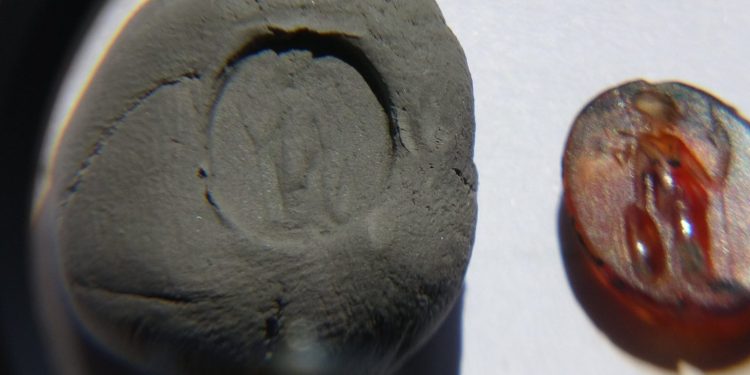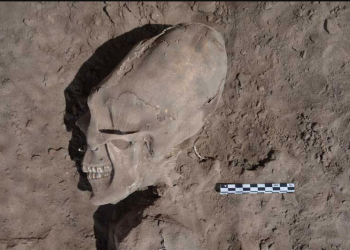Archaeologists have unearthed a significant Roman Imperial Period ringstone engraved with the image of Athena, the protective deity of the ancient city of Assos. This discovery took place within the Ksenedochion structure—believed to be ancient hostel buildings—among the Assos Ruins located in the Ayvacık district of Çanakkale, Turkey. The city of Assos, nestled in the southwestern corner of the Biga Peninsula within Behramkale Village, has a storied past that dates back to the Bronze Age. Scholars have drawn parallels between Assos and the ancient cities of Assuwa and Pedasos, referenced in Hittite texts and Homer’s epic, the Iliad. The city, as it is known from historical records, was founded by settlers from the island of Lesbos in the 7th century BC, with Athena, daughter of Zeus and one of the twelve Olympian deities, honored as its protector.
For nearly 40 years, a dedicated team of Turkish archaeologists has been excavating this ancient site. The ongoing work is led by Professor Nurettin Arslan of Çanakkale Onsekiz Mart University’s Archaeology Department, supported by Turkey’s Ministry of Culture and Tourism and the sponsorship of İÇDAŞ. Professor Arslan provided insights into the recent find, stating, “This season, we uncovered a stone ringstone within the Ksenedochion. It bears an engraving of Athena, the city’s primary goddess, depicted in a standing position. Such seals were widespread during the Roman period and were used in earlier and later times as well. This particular ringstone, likely belonging to a notable individual in Assos, served a function similar to that of a modern-day signature. We estimate its age to be between 1,600 and 1,700 years, dating it to the 2nd or 3rd century AD.”
The history of Assos is marked by its passage through various empires and rulers. In the 6th century BC, it fell under Lydian control before being absorbed into the Persian Empire after Lydia’s defeat by King Cyrus II. The city later joined the Athenian Confederacy in the 5th century BC, only to be reclaimed by Persia until Alexander the Great’s conquest in 334 BC. Following Alexander’s death, Assos changed hands among his successors, eventually becoming part of the Kingdom of Pergamon and later the Roman Empire. Assos flourished during the 1st and 2nd centuries AD but gradually declined as it came under Byzantine, Seljuk, Frankish Crusader, and Ottoman rule by 1330.











